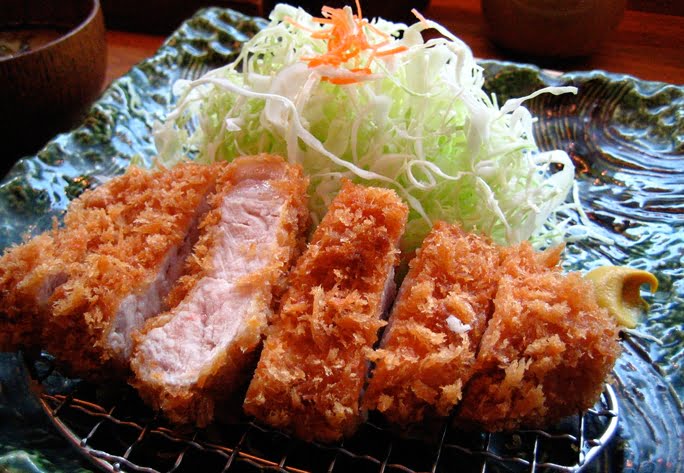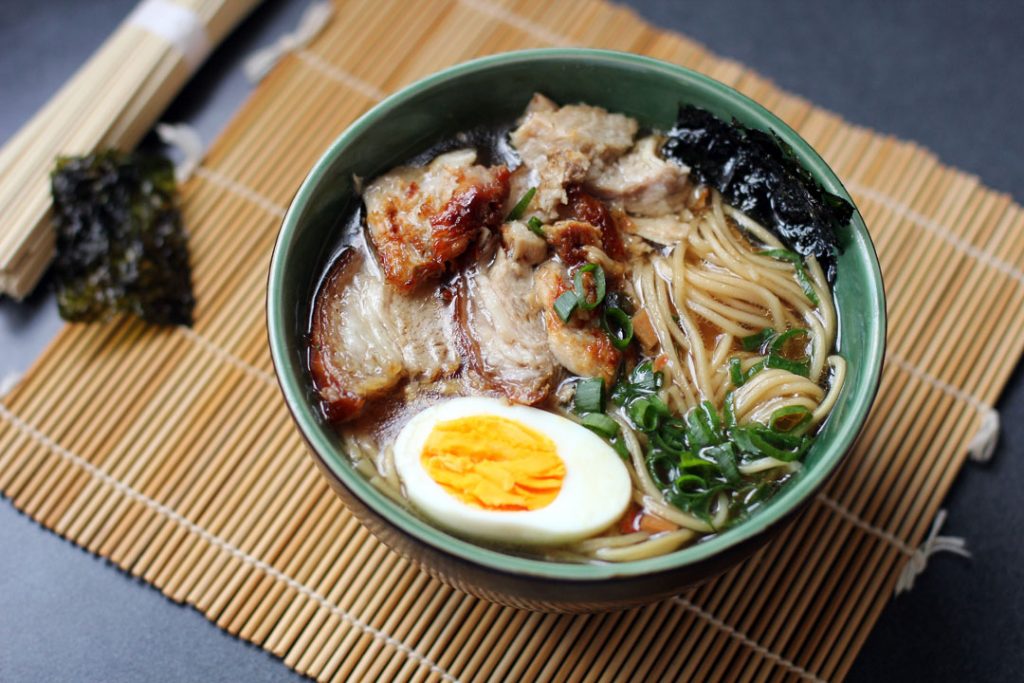Japanese adverb, otherwise known as fukushi ( 副詞・ふくし), is an important element in the Japanese language. In fact, it will feel off if you don’t include them. What happens if you want to make your conversation more interesting and descriptive?
If you’re a beginner, it can be frustrating to only be able to explain something with little to no detail. When you’ve mastered the necessary grammar patterns, it’s time to move on to the complexities of using adverbs — although, with practice, you’ll realize that it’s actually not that hard. (See how we use an adverb there?) Really, the rules are simpler than how they sound.
In this article, we’ll be walking you through how to use Japanese adverbs and change adjectives to adverbs. Along the way, we’ll be giving example sentences, too.
Want to learn Japanese from anywhere in the world? We have self-study courses (including a free 30-day hiragana challenge) made by our professional instructors. Browse them all here!
How are English Adverbs Different from Japanese Adverbs?
Although their functions parallel English adverbs, there are a few distinctions between both languages. Japanese adverbs are boxed based on their characteristics. While you’ll find most English adverbs ending with a ~ly (commonly, effectively, fluently — just to name a few), Japanese adverbs are more varied (more of that later).
Another key difference is its placement. Unlike in English, Japanese adverbs can be placed anywhere in a sentence as long as they appear before the verb.
Let’s get one thing straight: no matter which one, adverbs serve the purpose of giving context, and they’re generally used for verbs.
Take a look at the example below.
| 私たちは | 一緒(いっしょ)に | 試験(しけん)を | 勉強(べんきょう)しています |
| We | Together | Exam | Learning |
| Subject | Adverb | Object | Verb |
No matter the adverb is placed, the meaning won’t change (“We are learning exam together“).
You can put the adverb before an object or a verb.
- Subject は + Object を + Adverb + Verb
- Subject は + Adverb + Object を + Verb
一緒に試験を勉強しています。
Issho ni shiken wo benkyou shite imasu.
試験を一緒に勉強しています。
Shiken wo issho ni wo benkyou shite imasu.
How to Use Japanese Adverbs
Of course, as you receive more advanced Japanese study materials, you’ll find that more complex sentence patterns. In fact, you don’t always have to pair an adverb with 「Object を + Verb」.
Unlike an adjective, which can only be paired with a noun, adverbs are more versatile. They can to be paired with a word, be it a verb or 動詞 (doshi), an adjective or 形容詞 (keiyōshi), or even another adverb.
- いつも電車で学校へ行きます。
いつもでんしゃでがっこうへいきます。
(I) always go to school by train.
- 彼女にとっては私が結局ただの友達だ。
かのじょにとってはわたしがけっきょくただのともだちだ
After all, I’m just a friend to her.
- ワクチンはほとんど痛くなかった。
ワクチンはほとんどいたくなかった。
The vaccine didn’t hurt very much.
In all of the examples above, all of the adverb are tailed by a verb, adjective or a noun. The word ‘barely’ (ほとんど) is put in front of the adjective ‘hurt’ (痛い).
Take a look at another example, where we use an adverb for another adverb.
- 先生は本当に優しく教えます。
せんせいはほんとうにやさしくおしえます。
The teacher teaches really kindly.
Turning Adjectives into Japanese Adverbs
In the Japanese language, you can modify almost all of its adjectives (形容詞・けいようし) into adverbs. Most of them will share the same meaning — similar to English. The word ‘effective’ and ‘fluent’, for example, can be altered into ‘effectively’ and ‘fluently’.
How you change Japanese adjectives to adverbs is based on conjugation rules — which, again, depending on the type of adjective a word belongs to.
There are two classifications: 「い」adjectives and 「な」adjectives.
「い」Adjectives
You’ve probably heard popular words like「かっこい!」or「かわいい!」on anime, talk shows — or even manga. Notice how all of them end with an ‘i’? That’s how easy it is to identify an 「い」adjective.
By changing the final い (i) to く (ku), an adjective will turn into an adverb. It’s pretty similar to how you add ‘ly’ on adjectives to English.
い-adjectives + い (i) → い-adjectives + く(ku)
| Kanji | Adjective | Adverb |
| 強い | つよい Strong | つよく Strongly |
| 弱い | よわい Weak | よわく Weakly |
| 速い | はやい Quick | はやく Quickly |
| 遅い | おそい Slow | おそく Slowly |
| 高い | たかい High | たかく Highly |
There is an exception to the い-adjective: 良い・いい. Instead of いく, it will be transformed into よく. This is because the word’s original spelling is よい. Although the form has changed, all its derivations and conjugations remain the same.
「な」Adjectives
Although a bit trickier than the「い」adjective, but you can easily identify a「な」adjective when you hear the particle な (na) adjective before a noun (for example, 幸せ「しあわせ」な 人)
You don’t need to erase anything from the actual adjective word. Instead, replace な with に (ni) to convert a な (na) adjective into an adverb.
な-adjectives + な (na) → な-adjectives + に(ni)
| Kanji | Adjective | Adverb |
| 幸せ しあわせ | 幸せな Happy | 幸せ に Happily |
| 静か しずか | 静か な Quiet | 静か に Quietly |
| 元気 げんき | 元気 な Energetic (healthy) | 元気 に Energetically |
| 上手 じょうず | 上手 な Skillful | 上手 に Skillfully |
| 下手 へた | 下手 な Unskillful | 下手 に Unskillfully |
Although it seems that all adverbs are acquired from adjectives, that is not always the case. These adverbs do not have a specific form or rule to recognize them with, so you must learn each vocabulary word and they are just as important to remember. However, they are utilized in a similar way as all the other adverbs.
Non-adjectival Japanese Adverbs
Although most adjectives can be turned into adverbs, not all adverbs are related to adjectives. This is an important point because Japanese people will use a list of general adverbs that don’t have an original term. They don’t have any identifiable pattern, so you will have to remember each vocabulary alone.
Most non-adjectival adverbs are used to indicate frequency, time and place. Here are a few common examples of adverbs that don’t originate from a parent adjective.
| Adjective | Meaning | Example sentence |
| ゆっくり | Slowly | ゆっくり歩いて(あるいて)います (I am) walking slowly. |
| たくさん | A lot | たくさんご飯(ごはん)を食べたい(たべたい)です (I) want to eat a lot of food. |
| ちょっと | A bit | ちょっと待って(まって)よ Please wait a moment. |
| たぶん | Maybe; perhaps | それはたぶん無理(むり)です That is probably impossible. |
| 徐々に | Gradually; little by little | 徐々に上手になります。 Gradually becoming skillful. |
| やっと | Finally; at last | やっと授業(じゅぎょう)が終わった(おわった)! The class is finally over! |
| もっと | More; further; even more | もっと頑張れ(がんばれ) Put in more effort! |
| きっと | Surely; almost certainly | あなたの願い(ねがい)はきっと叶う(かなう)よ Your wish will surely come true. |
| ずっと | Always | あなたのことがずっと好き(すき)だった I’ve liked you for a very long time. |
| ぜひ | Certainly; without fail | ぜひ見て(みて)ください Please be sure to look at it. |
A lot of these Japanese adverbs end with ~tto. Curious to know more about them? We’ve made a more in-depth guide on motto, chotto, kitto, zutto, and and more!
Types of Japanese Adverbs
We can divide Japanese adverbs into several categories, including time, frequency, place, manner and degree.
Adverbs of degree
Adding one adverb in a sentence can be the difference between making or ruining someone’s day. What if you say “You are not so beautiful” instead of “You are very beautiful?”
This is where adverbs of degree are used to stipulate the scale or extent of something. We’ll be listing some of the must-know adverbs in descending order.
Take a look at some examples below.
- 私は炊事が全然できない。
わたしはすいじがぜんぜんできない。
I can’t cook at all.
- 彼は非常に意識のある人です。
かれはひじょうにいしきのあるひとです。
He is a man of great knowledge.
| Kanji | Hiragana | Romaji | Meaning | |
| 1. | 非常に | ひじょうに | hijou ni | very much |
| 2. | とても | totemo | very | |
| 3. | 極めて | きわめて | kiwamete | extremely |
| 4. | 随分 | ずいぶん | zuibun | very |
| 5. | 沢山 | たくさん | takusan | very |
| 6. | 本当に | ほんとうに | hontou ni | really |
| 7. | 大体 | だいたい | daitai | mostly |
| 8. | 大分 | だいぶ | daibu | considerably; greatly |
| 9. | 丁度 | ちょうど | choudo | just; exactly |
| 10. | かなり | kanari | fairly | |
| 11. | 相当に | そうとうに | soutou ni | pretty |
| 12. | 僅かに | わずかに | wazuka ni | slightly; barely |
| 13. | ほぼ | hobo | about; roughly | |
| 14. | 少し | すこし | sukoshi | a little bit |
| 15. | まあまあ | maamaa | so-so | |
| 16. | 中々 | なかなか | nakanaka | quite |
| 17. | そこそこ | sokosoko | reasonably | |
| 18. | 余り | あまり | amari | (not) very |
| 19. | たいして | taishite | (not so) much | |
| 20. | 全然 | ぜんぜん | zenzen | (not) at all |
The adverb とても is normally only used with positive sentences. If you want the opposite, opt for あまり or ぜんぜん. Both will need a negative sentence.
Adverbs based of frequency
How often do you do something? Is it always, sometimes — or never? This is when Japanese adverbs of frequency are used. They are usually placed before the main action word or another adverb.
Take a look at some examples below.
- めったに寿司を食べていません。
めったにすしをたべていません。
(I) rarely eat sushi.
- もうずっと忘れてた。
もうずっとわすれてた。
Ah, I’ve already forgotten about since ages ago.
| Kanji | Hiragana | Romaji | Meaning | |
| 21. | いつも | itsumo | Always | |
| 22. | ずっと | zutto | Always (continuously) | |
| 23. | よく | yoku | Often | |
| 24. | 通常 | つうじょう | tsuujou | Usually |
| 25. | 度々 | たびたび | tabitabi | Often |
| 26. | 時々 | ときどき | tokidoki | Some |
| 27. | たまに | tama ni | Sometimes | |
| 28. | あまり | amari | Rarely (negative form) | |
| 29. | 滅多に | めったに | metta ni | Rarely (negative form) |
| 30. | 決して | けっして | kesshite | Never (negative form) |
Adverbs based on level of certainty
Adverbs of this kind are used to expand on the extent of how actions or adjectives (or even another adverb).
Take a look at some examples below.
- 絶対に諦めない。
ぜったいにあきらめない。
I shall never give up.
- 何事にも必ず終わりがある。
なにごとにもかならずおわりがある。
All things must have an end.
| Kanji | Hiragana | Romaji | Meaning | |
| 31. | 絶対に | ぜったいに | zettai ni | Definitey |
| 32. | 必ず | かならず | kanarazu | Without exception |
| 33. | 是非 | ぜひ | zehi | Without fail |
| 34. | 確かに | たしかに | tashika ni | Certainly |
| 35. | やはり | yahari | As expected | |
| 36. | きっと | kitto | Surely; undoubtedly | |
| 37. | 恐らく | おそらく | osoraku | Probably |
| 38. | もしかしたら | moshikashitara | Perhaps; maybe | |
| 39. | 多分 | たぶん | tabun | Maybe |
Adverbs based of time
Japanese adverbs of time indicate when something happens.
Take a look at some examples below.
- 最近虫が多くなった。
ぜったいにあきらめない。
I shall never give up.
- しばらくお待ちください。
なにごとにもかならずおわりがある。
All things must have an end.
| Kanji | Hiragana | Romaji | Meaning | |
| 41. | 今 | いま | ima | Now |
| 42. | 今すぐに | いますぐに | ima sugu ni | Right now |
| 43. | 先に | さきに | saki ni | Previously |
| 44. | 前に | まえに | mae ni | Previously |
| 45. | 後で | あとで | ato de | Later |
| 46. | まだ | mada | Yet | |
| 47. | また | mata | Still | |
| 48. | すぐ | すぐ | sugu | Soon |
| 49. | すでに | Already | ||
| 50. | 先ほど | さきほど | saki hodo | Just now |
| 51. | 暫く | しばらく | shibaraku | For a while |
| 52. | 結局 | けっきょく | kekkyoku | Eventually |
| 53. | 今日 | きょう | kyou | Today |
| 54. | 明日 | あした | ashita | Tomorrow |
| 55. | 明後日 | あさって | asatte | The day after tomorrow |
| 56. | 昨日 | きのう | kinou | Yesterday |
| 57. | 一昨日 | おととい | ototoi | Two days ago |
| 58. | 今朝 | けさ | kesa | This morning |
| 59. | 今夜 | こにゃ | konya | Tonight |
| 60. | 毎日 | まいにち | mainichi | Daily; every day |
| 61. | 毎週 | まいしゅう | maishuu | Weekly |
| 62. | 毎月 | まいげつ | maigetsu | Monthly |
| 63. | 毎年 | まいねん | mainen | Annually |
| 64. | やっと | yatto | Finally | |
| 65. | 最近 | さいきん | saikin | Recently |
| 66. | 最初に | さいしょに | saisho ni | First |
| 67. | 最後に | さいごに | saigo ni | Last |
Adverbs based of manner
Also called 方法の福祉・ほうほうのふくし, Japanese adverbs of manner describe how an action or thing happen. This is where you’ll find most adjective-derived adverbs being used.
Take a look at the example down below.
- 私は早く朝ご飯を食べます。
わたしははやくあさごはんをたべます。
I eat my breakfast quickly.
- 私は朝ご飯を早く食べます。
わたしははやくあさごはんをたべます。
I quickly eat my breakfast.
| Kanji | Hiragana | Romaji | Meaning | |
| 68. | 固く | かたく | kataku | Hardly; firmly |
| 69. | 優しく | やさしく | yasashiku | Softly |
| 70. | 明るく | あかるく | akaruku | Brightly |
| 71. | 暗く | くらく | kuraku | Darkly; grimly |
| 72. | 高く | たかく | takaku | Highly |
| 73. | 低く | ひくく | hikuku | Low |
| 74. | ゆっくり | yukkuri | Slowly | |
| 75. | 遅く | おそく | osoku | Tardily |
| 76. | 早く | はやく | hayaku | Quickly |
| 77. | 静かに | しずかに | shizuka ni | Quietly |
| 78. | うるさく | urusaku | Loudly | |
| 79. | 簡単に | かんたんに | kantan ni | Easily |
| 80. | 丁寧に | ていねいに | teinei ni | Carefully; politely |
| 81. | 特に | とくに | toku ni | Especially |
| 82. | 一緒に | いっしょに | issho ni | Together |
| 83. | そのまま | sono mama | as it is; without change | |
| 84. | 急に | きゅうに | kyuu ni | Suddenly |
| 85. | 突然 | とつぜん | totsuzen | Suddenly |
| 86. | 偶然に | ぐうぜんに | guuzen ni | Accidentally |
| 87. | 新しく | あたらしく | atarashiku | Newly |
Japanese Adverbs: Onomatopoeia
Onomatopoeia is a word that resembles the actual sound of the thing they refer to. In English, you’ll encounter words like “tick-tock” from a clock, or “vroom” from a car.
Although it falls under the same umbrella, Japanese onomatopoeia has a wider range of meanings. Not just sound sources, these words can also reflect a mood or emotion. This is why it’s hard to guess the meaning of the word just from the sound alone. For example, ペラペラ means fluent — but you probably don’t know about it.
The good news is this: common onomatopoeia are reduplications — meaning, the whole word is repeated exactly or with a slight change. They sound catchy (like ドキドキ or ペコペコ), so it’s not half as bad as memorizing, say, the whole N4 kanji unit. A lot of onomatopoeia is followed by the particle と (to).
俺はイライラと試験を復習しました。
おれはイライラとしけんをふくしゅうしました
I annoyingly reviewed the exam.
去年の冬がめちゃくちゃ寒かっただ。
きょねんのふゆがめちゃくちゃさむかっただ。
Last year’s winter was very cold.
| Hiragana | Romaji | Meaning | |
| 88. | ぶつぶつ | butsu butsu | grumble; domplain |
| 89. | もぐもぐ | mogu mogu | mumble |
| 90. | ペラペラ | pera pera | fluently |
| 91. | ペコペコ | peko peko | very hungry; starving |
| 92. | ちびちび | chibi chibi | little by little |
| 93. | むしゃむしゃ | musha musha | (munch) ravenously |
| 94. | ズルズル | zuru zuru | slowly; slurp |
| 95. | パリパリ | pari pari | crunchy; rispy |
| 96. | いそいそ | iso iso | cheerful |
| 97. | いらいら | ira ira | irritated, annoyeed |
| 98. | ふわふわ | fuwa fuwa | soft; fluffy |
| 99. | モチモチ | mochi mochi | springy; doughy; chewy |
| 100. | くらくら | kura kura | feel dizzy; giddy |
| 101. | むしむし | mushi mushi | hot and humid |
Conclusion
Learning Japanese adverbs is the next step after you’ve mastered all the basic Japanese words and phrases. Instead of memorizing everything at once, we recommend going over them slowly.
If you want to learn more, we offer a variety of online, group, and private lessons — not to mention other free content on our blog, too.
Haven’t visited all of our must-read content? Check out our top 100 basic Japanese words and basic Japanese greetings.
Japanese Adverb FAQs
How to use Japanese adverbs?
Of course, as you receive more advanced Japanese study materials, you’ll find that more complex sentence patterns. In fact, you don’t always have to pair an adverb with 「Object を + Verb」.
Unlike an adjective, which can only be paired with a noun, adverbs are more versatile. They can to be paired with a word, be it a verb or 動詞 (doshi), an adjective or 形容詞 (keiyōshi), or even another adverb.
What does zettai mean in Japanese?
Zettai means absolutely in Japanese and it is usually follows up by negative tense. For exmaple: 絶対に諦めない。ぜったいにあきらめない。 I shall never give up.

























